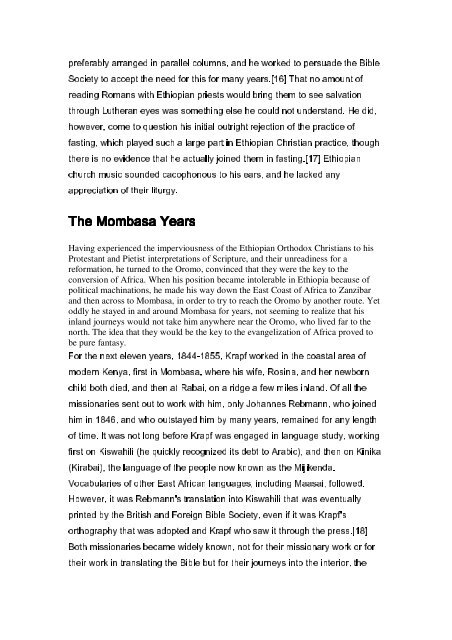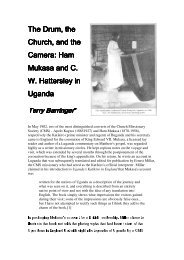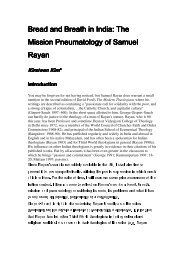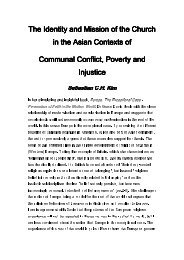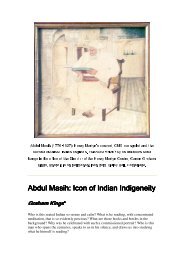The Legacy of Johann Ludwig Krapf - Henry Martyn Centre
The Legacy of Johann Ludwig Krapf - Henry Martyn Centre
The Legacy of Johann Ludwig Krapf - Henry Martyn Centre
Create successful ePaper yourself
Turn your PDF publications into a flip-book with our unique Google optimized e-Paper software.
Having experienced the imperviousness <strong>of</strong> the Ethiopian Orthodox Christians to his<br />
Protestant and Pietist interpretations <strong>of</strong> Scripture, and their unreadiness for a<br />
reformation, he turned to the Oromo, convinced that they were the key to the<br />
conversion <strong>of</strong> Africa. When his position became intolerable in Ethiopia because <strong>of</strong><br />
political machinations, he made his way down the East Coast <strong>of</strong> Africa to Zanzibar<br />
and then across to Mombasa, in order to try to reach the Oromo by another route. Yet<br />
oddly he stayed in and around Mombasa for years, not seeming to realize that his<br />
inland journeys would not take him anywhere near the Oromo, who lived far to the<br />
north. <strong>The</strong> idea that they would be the key to the evangelization <strong>of</strong> Africa proved to<br />
be pure fantasy.<br />
<strong>The</strong> Mombasa Years<br />
eleven years, 1844-1855, <strong>Krapf</strong> worked in the coastal area <strong>of</strong> modern Kenya, first in Mombasa, where his wife, Rosina, and her newborn next the For<br />
arranged in parallel columns, and he worked to persuade the Bible Society to accept the need for this for many years.[16] That no amount <strong>of</strong> reading Romans with Ethiopian priests would bring them to see salvation through Lutheran eyes was something else he could not understand. He did, however, come to question his initial outright rejection <strong>of</strong> the practice <strong>of</strong> preferably<br />
which played such a large part in Ethiopian Christian practice, though there is no evidence that he actually joined them in fasting.[17] Ethiopian church music sounded cacophonous to his ears, and he lacked any appreciation <strong>of</strong> their liturgy. fasting,<br />
Mombasa Years <strong>The</strong> Mombasa Years <strong>The</strong> Mombasa Years <strong>The</strong><br />
both died, and then at Rabai, on a ridge a few miles inland. Of all the missionaries sent out to work with him, only <strong>Johann</strong>es Rebmann, who joined him in 1846, and who outstayed him by many years, remained for any length <strong>of</strong> time. It was not long before <strong>Krapf</strong> was engaged in language study, working first on Kiswahili (he quickly recognized its debt to Arabic), and then on Kinika child<br />
the language <strong>of</strong> the people now known as the Mijikenda. Vocabularies <strong>of</strong> other East African languages, including Maasai, followed. However, it was Rebmann's translation into Kiswahili that was eventually printed by the British and Foreign Bible Society, even if it was <strong>Krapf</strong>'s orthography that was adopted and <strong>Krapf</strong> who saw it through the press.[18] (Kirabai),<br />
missionaries became widely known, not for their missionary work or for their work in translating the Bible but for their journeys into the interior, the<br />
Both


